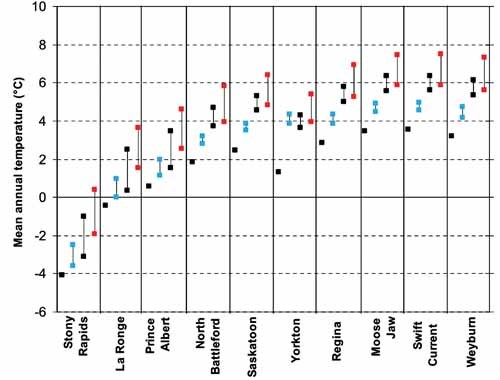A website launched by the Prairie Adaptation Research Collaborative (PARC) based at the University of Regina gives a glimpse at the future climate of the Yorkton area and Saskatchewan at large.
Working from the latest models indicating that some level of warming is now inevitable despite any measures taken, www.saskadapt.ca is designed to present the public with accessible information on changes to expect and options for adaptation.
Temperatures across the province are expected to rise by at least 1C above the 1961-1990 baseline by the 2020s, and Yorkton is predicted to see some of the most rapid increases. The annual temperature here is predicted to rise by about 3 over baseline in the next decade, and approximately 5 by the 2080s.Precipitation in the area is anticipated to increase in the coming decades; however, the models call for a drier climate overall due to increased water loss resulting from higher temperatures. Rainfall will be heavier but less frequent, likely causing issues with soil and water management. Extreme weather events such as heavy precipitation and drought are expected to become more common, and droughts will increase in their intensity.
The news isn't all bad. Increased temperatures will affect winters more than summers, and what impact there is in the summer months will mean a longer, warmer growing season. Summer cooling demand in Yorkton may increase by 1.5 to 2.5 times over the next century, while heating bills drop by 14 to 31 percent.
PARC's primary recommendation is for citizens and municipalities to look closely at their water and sewer management strategies to ensure they can cope with more frequent flood and drought scenarios. Farmers should continue to emphasize soil conservation and might consider looking into new crops that benefit from a warmer, earlier growing season. However, producers must also be prepared to cope with wetter springs and drier summers. Parks and recreation facilities can look to capitalize on the tourism opportunities brought by a longer summer season.
More information is available at www.saskadapt.ca.

.JPG;w=120;h=80;mode=crop)


